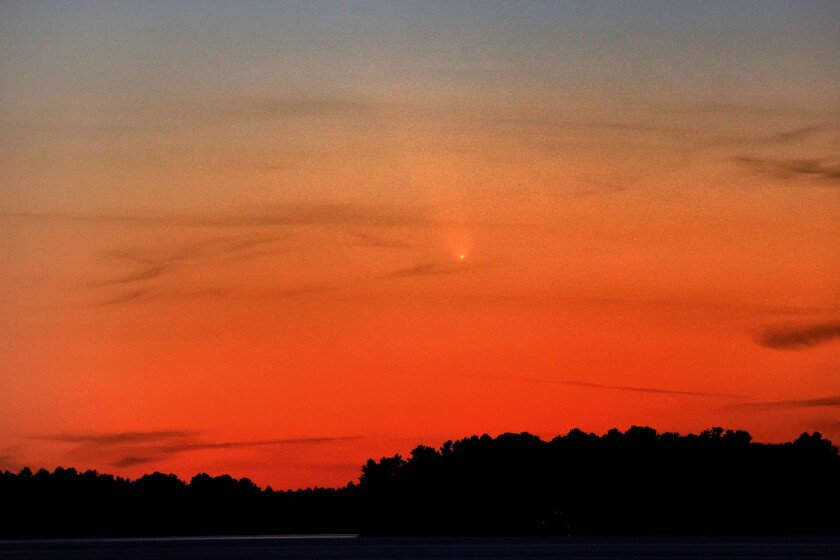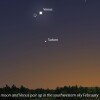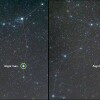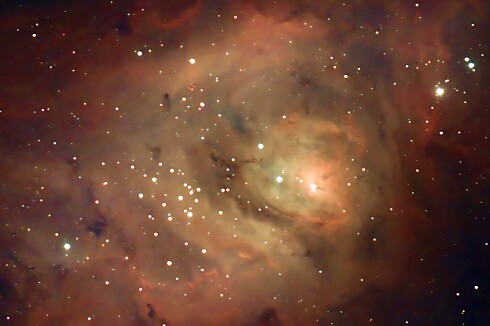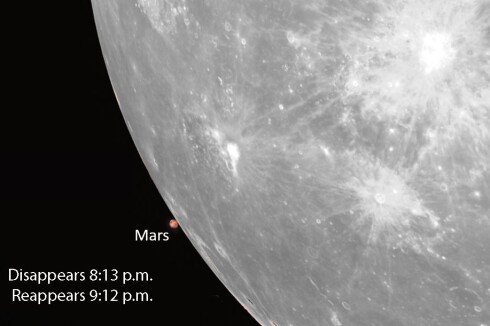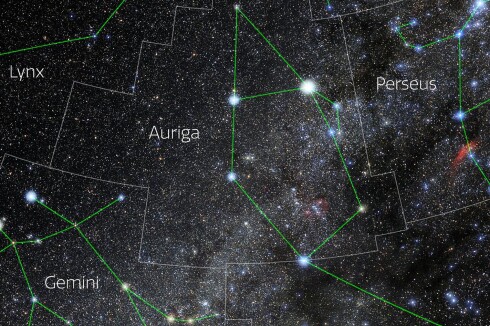The comet is back! Many of you struggled to find it in the morning sky last month because it was so close to the horizon. Thick air and haze soaked up much of the comet's light, making it nearly impossible to pin down. Observers much farther south had an easier job of it because it stood higher up in the sky.
I tracked the fuzzball on six mornings and never saw it with the naked eye, only through the camera viewfinder and once with binoculars. Thankfully, Tsuchinshan-ATLAS's evening appearance will be more accessible, though perhaps not as bright as expected in part because of interference from moonlight.
ADVERTISEMENT
I was ready on Oct. 11 when the comet first entered the evening sky. Conditions were very good with clear air and only a few distant cirrus clouds. I located Venus in the southwestern sky and measured off 2 1/2 fists to its right. After several tries I was able to spot the comet in my camera and then 10x50 binoculars at 7:10 p.m., 40 minutes after sunset. It was faint! But as dusk deepened it became easier to see — my binoculars even showed a short tail. I tried hard to pick out the comet with the naked eye but couldn't convince myself I'd seen it.
While Tsuchinshan-ATLAS is much fainter than Venus, the brilliant planet will help point you there. Through about Oct. 19, the comet will remain about 2 1/2 fists from Venus even as the angle it makes with the planet gradually increases.
Don't be too concerned if the comet looks faint right now, visually and in photos. It's still low and strongly affected by the twilight glow and haze. Things will soon improve.
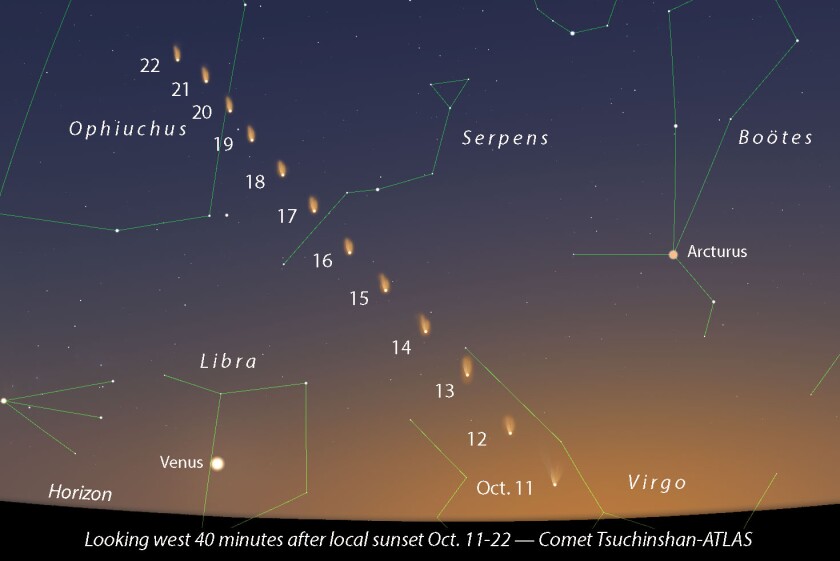
You can see on the map that the comet quickly climbs up the western sky in the coming nights. If you look at the same time each night you'll notice its altitude steadily increase. That's a good thing! It means less air and dust to filter out that long, delicate tail. By Oct. 14, the comet will set about 40 minutes after the end of evening twilight in a dark sky. In the following nights, the "window" of darkness grows longer and longer.
For that reason you'd expect that views of the comet to improve with time. And they will. But as it gains altitude Tsuchinshan-ATLAS also slowly fades as its distance from Earth increases. It's headed back into the "wilderness" of the solar system way beyond the orbit of Pluto. There's even a chance it may escape the sun altogether and beat a path for interstellar space.
We also have another problem — the moon. Right now it's in waxing gibbous phase and will be full on Oct. 17. Its light will dilute the comet's brilliance and "shorten" the apparent tail length from about Oct. 15 through Oct. 20. After that we're in the clear!
Come the 20th, Tsuchinshan-ATLAS should be about 3rd magnitude with a nice, long tail easily visible with the naked eye from a dark, rural sky. If you live in the suburbs you'll need binoculars to see it well. But no matter where you observe from, binoculars will help reveal the full extent of the tail as well as any textures or colors the comet may display. If you have a scope, bring it along for close-up views of the brilliant nuclear region, located within the comet's head.
ADVERTISEMENT
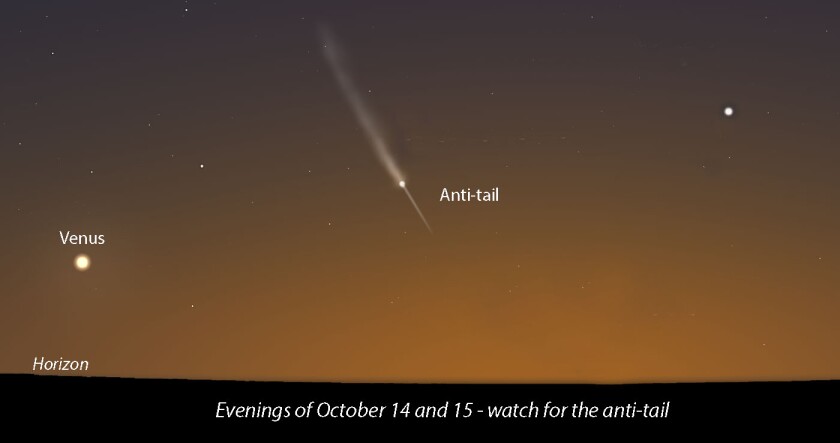
Pay special attention to the comet on the evenings of Oct. 14 and 15. That's when we should see a prominent anti-tail sticking straight below the head. This delicate spike of light forms when we view the comet's orbit edge-on. Dust deposited over past months along its orbital path stacks up and briefly lights up as a secondary tail from our perspective.
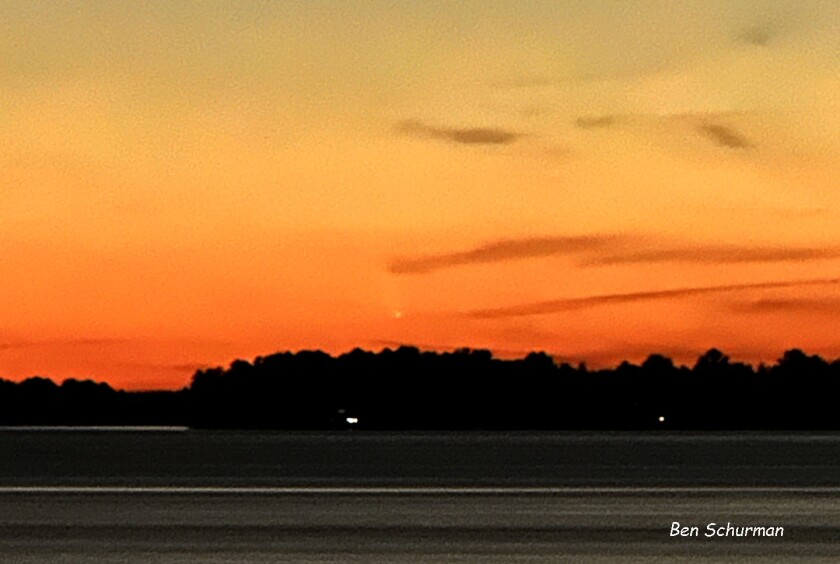
And don't forget your phone. You should have no problem photographing Comet Tsuchinshan-ATLAS at dusk with an ordinary smartphone. Just hold it up, tap on the comet to focus and then tap again to capture an image. A handheld phone can typically expose from 3-10 seconds, but if you buy a phone bracket and affix it to a tripod, exposures up to 30 seconds are possible.
I'll continue to post fresh photos and updates on the comet on my Facebook page at facebook.com/astrobobking. Clear skies and happy hunting!

